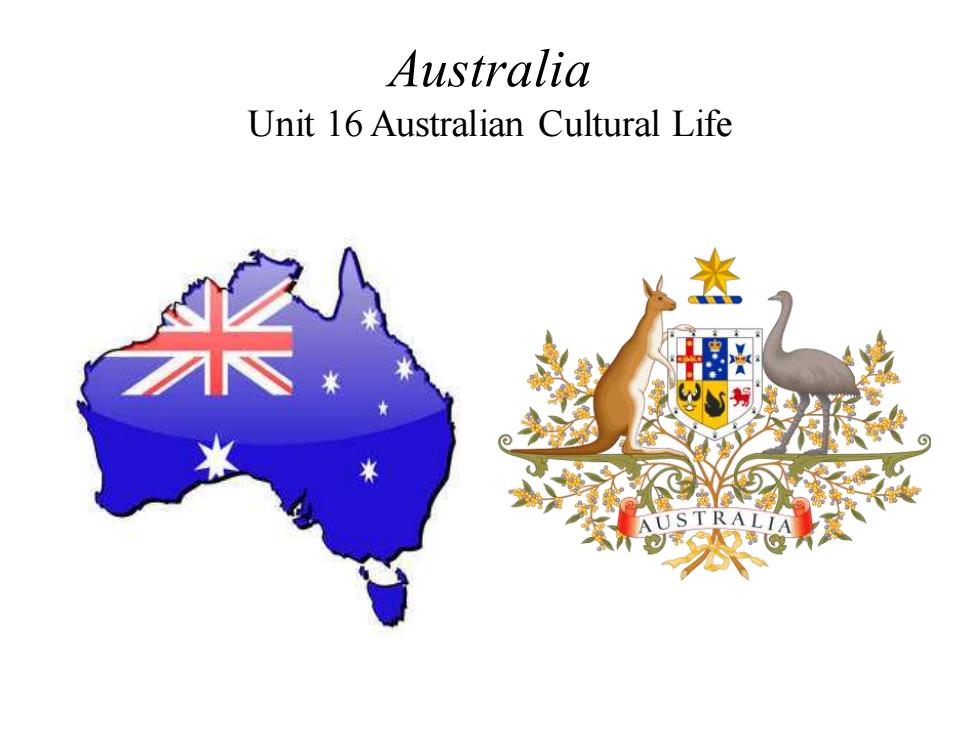
Australia Unit 16 Australian Cultural Life
Australia Unit 16 Australian Cultural Life
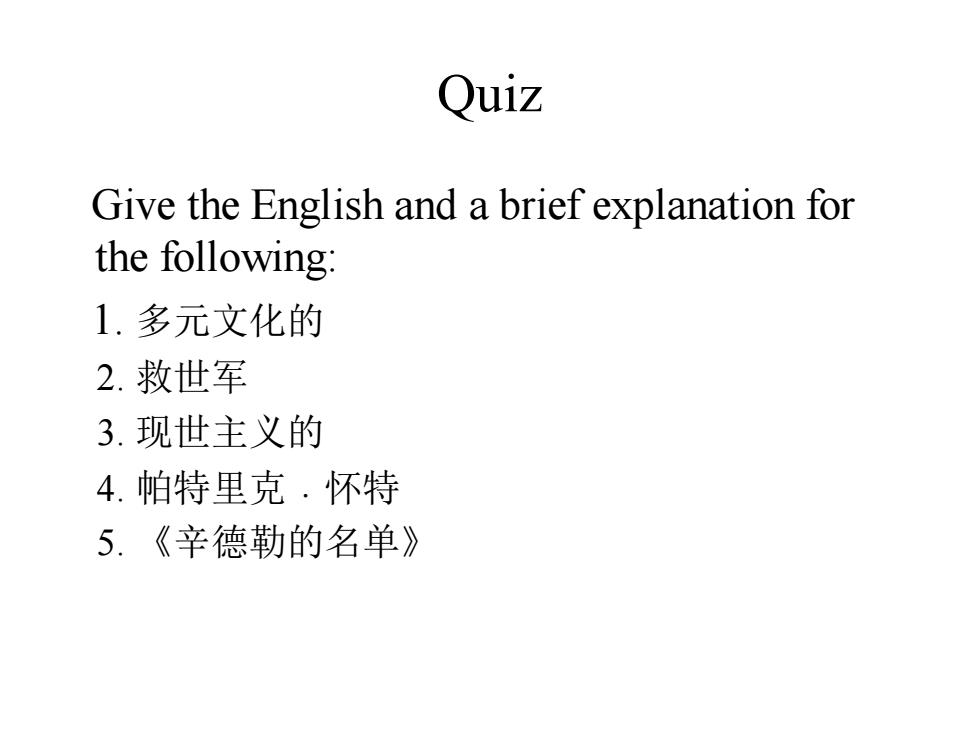
Quiz Give the English and a brief explanation for the following: 1.多元文化的 2.救世军 3.现世主义的 4.帕特里克.怀特 5.《辛德勒的名单》
Quiz Give the English and a brief explanation for the following: 1. 多元文化的 2. 救世军 3. 现世主义的 4. 帕特里克﹒怀特 5. 《辛德勒的名单》
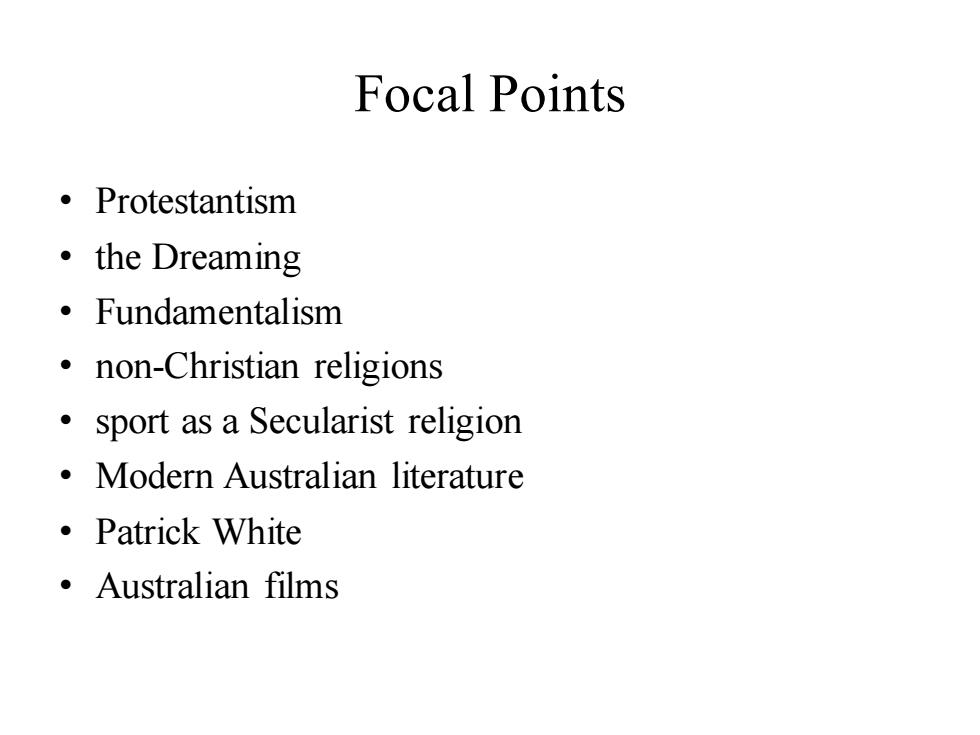
Focal Points ·Protestantism 。the Dreaming 。Fundamentalism non-Christian religions sport as a Secularist religion Modern Australian literature ·Patrick White 。Australian films
Focal Points • Protestantism • the Dreaming • Fundamentalism • non-Christian religions • sport as a Secularist religion • Modern Australian literature • Patrick White • Australian films

This Unit Is Divided into Four Sections I.Religion II.Sport--a Secularist Australian Religion? III.Australian Literature IV.Films
This Unit Is Divided into Four Sections I. Religion II. Sport -- a Secularist Australian Religion? III. Australian Literature IV.Films
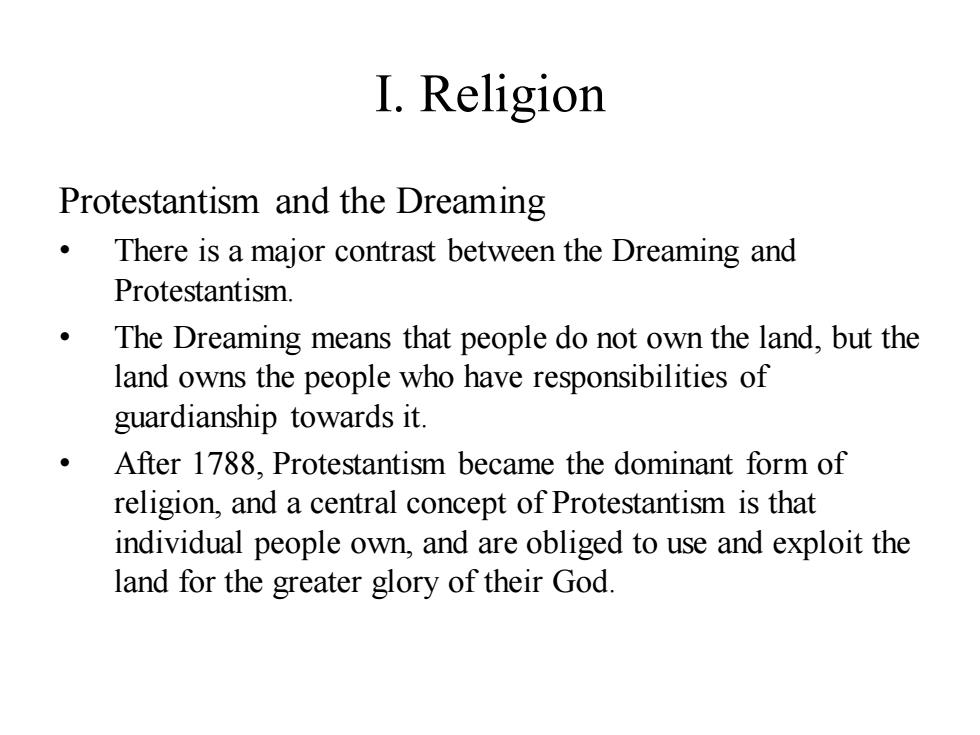
I.Religion Protestantism and the Dreaming 。 There is a major contrast between the Dreaming and Protestantism. The Dreaming means that people do not own the land,but the land owns the people who have responsibilities of guardianship towards it. After 1788,Protestantism became the dominant form of religion,and a central concept of Protestantism is that individual people own,and are obliged to use and exploit the land for the greater glory of their God
I. Religion Protestantism and the Dreaming • There is a major contrast between the Dreaming and Protestantism. • The Dreaming means that people do not own the land, but the land owns the people who have responsibilities of guardianship towards it. • After 1788, Protestantism became the dominant form of religion, and a central concept of Protestantism is that individual people own, and are obliged to use and exploit the land for the greater glory of their God
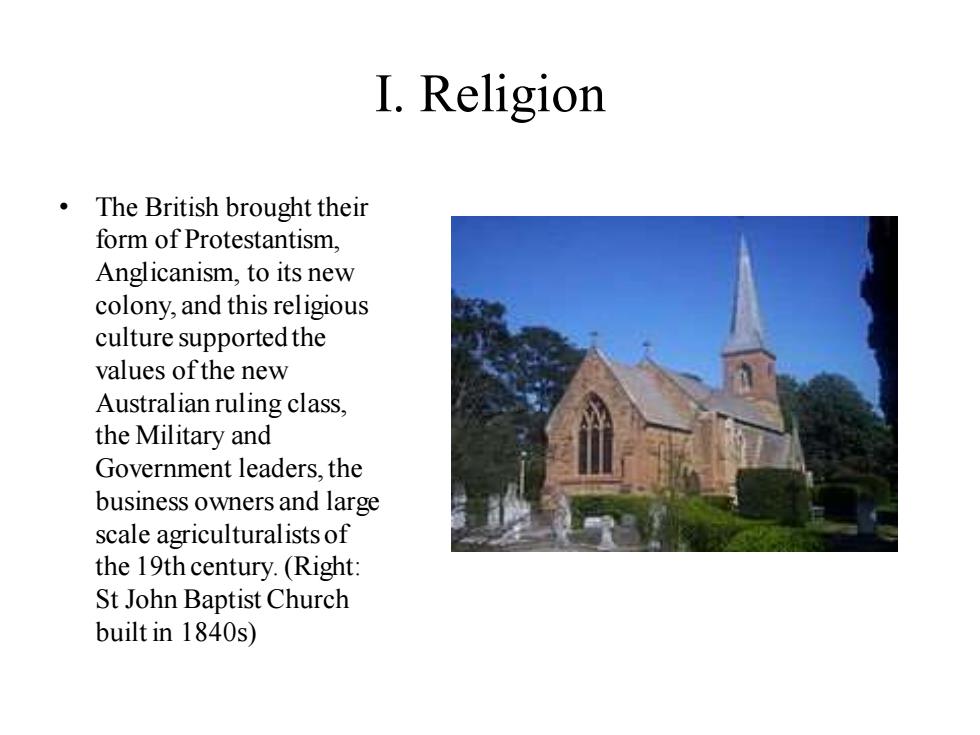
I.Religion The British brought their form of Protestantism, Anglicanism,to its new colony,and this religious culture supported the values of the new Australian ruling class, the Military and Government leaders,the business owners and large scale agriculturalists of the 19th century.(Right: St John Baptist Church built in 1840s)
I. Religion • The British brought their form of Protestantism, Anglicanism, to its new colony, and this religious culture supported the values of the new Australian ruling class, the Military and Government leaders, the business owners and large scale agriculturalists of the 19th century. (Right: St John Baptist Church built in 1840s)
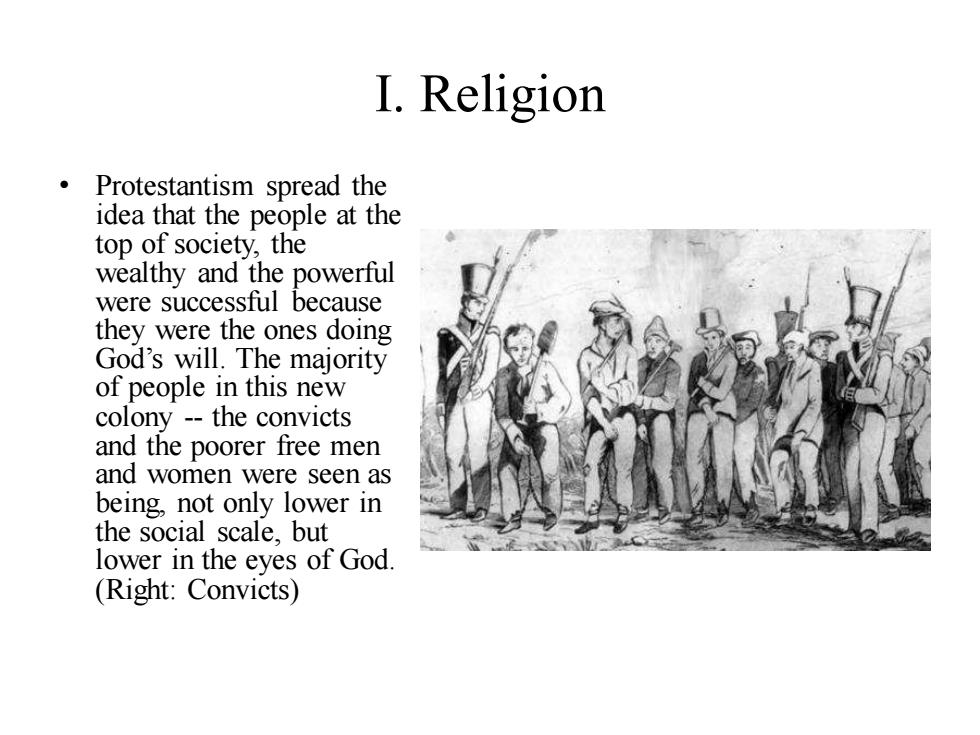
I.Religion Protestantism spread the idea that the people at the top of society,the wealthy and the powerful were successful because they were the ones doing God's will.The majority of people in this new colony --the convicts and the poorer free men and women were seen as being,not only lower in the social scale,but lower in the eyes of God (Right:Convicts)
I. Religion • Protestantism spread the idea that the people at the top of society, the wealthy and the powerful were successful because they were the ones doing God’s will. The majority of people in this new colony -- the convicts and the poorer free men and women were seen as being, not only lower in the social scale, but lower in the eyes of God. (Right: Convicts)
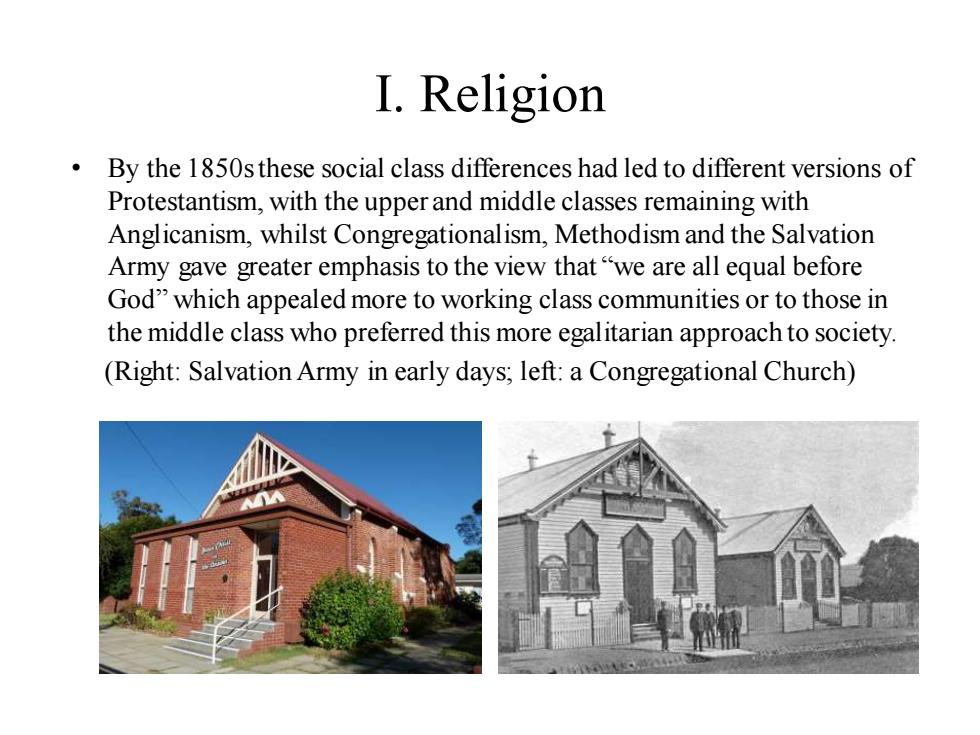
I.Religion By the 1850s these social class differences had led to different versions of Protestantism,with the upper and middle classes remaining with Anglicanism,whilst Congregationalism,Methodism and the Salvation Army gave greater emphasis to the view that"we are all equal before God"which appealed more to working class communities or to those in the middle class who preferred this more egalitarian approach to society. (Right:Salvation Army in early days;left:a Congregational Church)
I. Religion • By the 1850s these social class differences had led to different versions of Protestantism, with the upper and middle classes remaining with Anglicanism, whilst Congregationalism, Methodism and the Salvation Army gave greater emphasis to the view that “we are all equal before God” which appealed more to working class communities or to those in the middle class who preferred this more egalitarian approach to society. (Right: Salvation Army in early days; left: a Congregational Church)
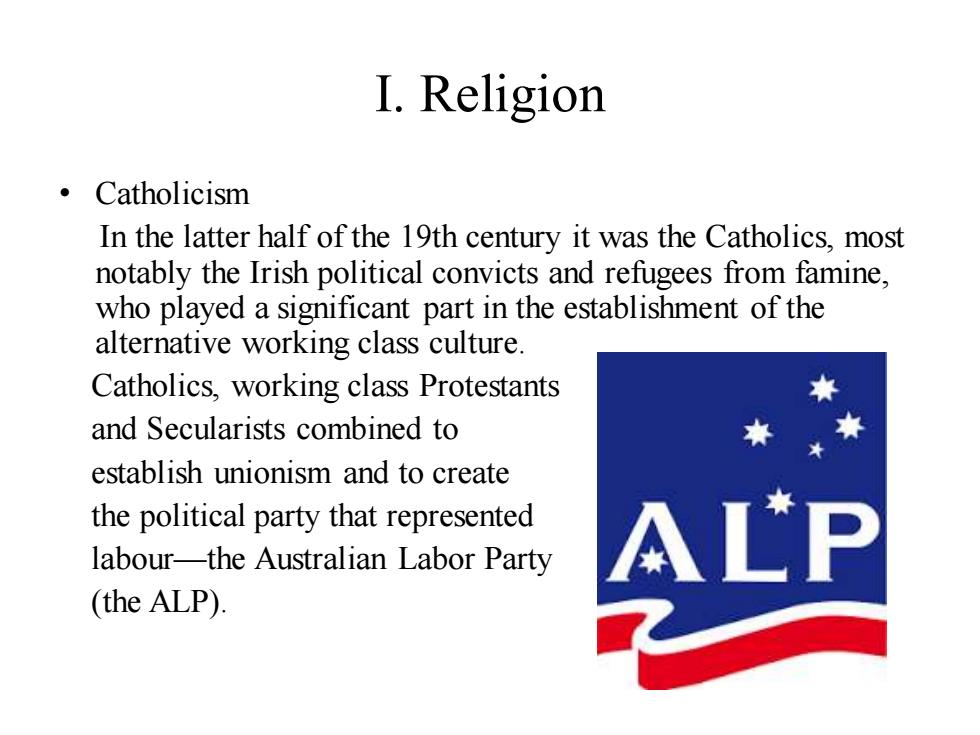
I.Religion ·Catholicism In the latter half of the 19th century it was the Catholics,most notably the Irish political convicts and refugees from famine, who played a significant part in the establishment of the alternative working class culture. Catholics,working class Protestants and Secularists combined to establish unionism and to create the political party that represented labour-the Australian Labor Party ALP (the ALP)
I. Religion • Catholicism In the latter half of the 19th century it was the Catholics, most notably the Irish political convicts and refugees from famine, who played a significant part in the establishment of the alternative working class culture. Catholics, working class Protestants and Secularists combined to establish unionism and to create the political party that represented labour—the Australian Labor Party (the ALP)
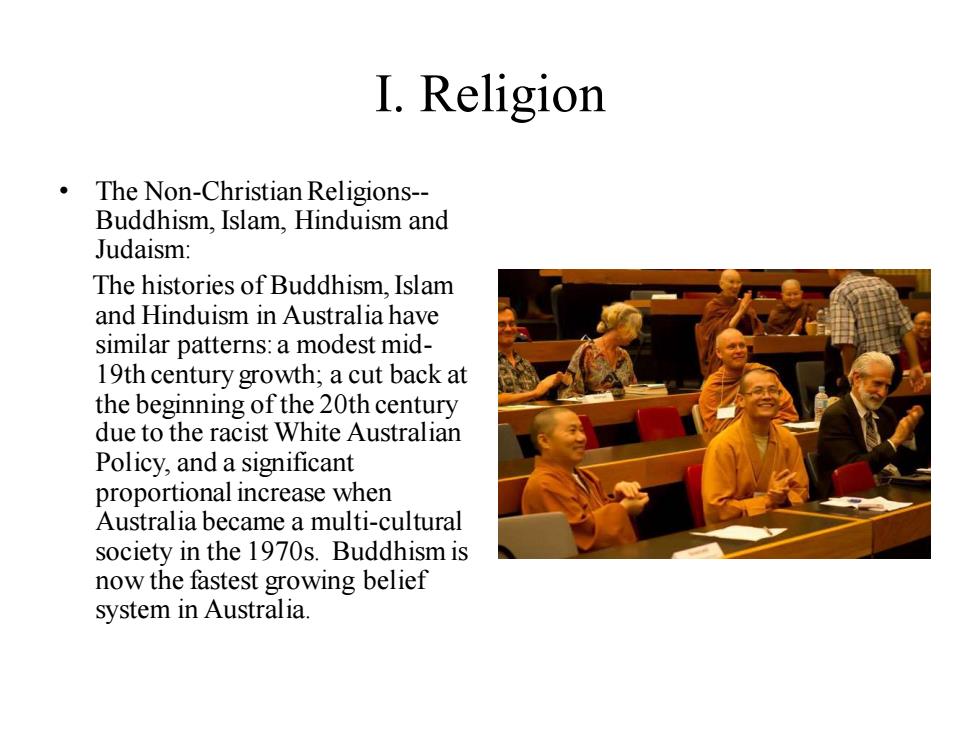
I.Religion The Non-Christian Religions-- Buddhism,Islam,Hinduism and Judaism: The histories of Buddhism,Islam and Hinduism in Australia have similar patterns:a modest mid- 19th century growth;a cut back at the beginning of the 20th century due to the racist White australian Policy,and a significant proportional increase when Australia became a multi-cultural society in the 1970s.Buddhism is now the fastest growing belief system in Australia
I. Religion • The Non-Christian Religions-- Buddhism, Islam, Hinduism and Judaism: The histories of Buddhism, Islam and Hinduism in Australia have similar patterns: a modest mid- 19th century growth; a cut back at the beginning of the 20th century due to the racist White Australian Policy, and a significant proportional increase when Australia became a multi-cultural society in the 1970s. Buddhism is now the fastest growing belief system in Australia